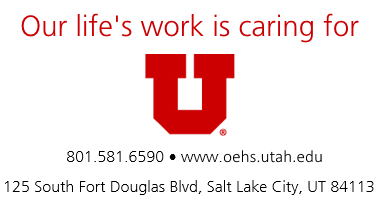Receiving hazardous materials
Hundreds of packages are shipped to and from campus daily. A small but important subset of these goods have been identified as posing an elevated or significant risk to public health, property and the environment while in transit. Numerous federal regulations exists to ensure the safe transportation of these Dangerous Goods (DG). For one reason or another your package may not arrive in the condition it was packaged, the receiver can unknowingly expose themselves and/or other colleagues to unnecessary dangers. Here are some quick tips to keep you and others around you safe when receiving a package:
BEFORE ACCEPTING ANY PACKAGE:
- Identify what you are handling. Regardless of the origin of your package there are universally recognized diamond shaped labels of nine DOT hazard classes that identify your package as a dangerous good and communicate some inherent characteristic. Additionally, every dangerous goods package must include a Declaration of Dangerous Goods or a Bill of Lading that will identify the chemical, the package weight and provide any special handling instructions. Be aware of suspicious packages. For additional information in recognizing suspicious packages click here.
- Inspect the package. Use your senses when inspecting a DG package. Evidence of packaging issues like leaks are usually observable on the exterior surfaces of packages. Sometimes, however, because liquids are often packed into a plastic bag, a leak is not visible but sensed by a passing odor. If you suspect any problems, DO NOT ACCEPT the shipment. Damaged, wet or leaking packages are the responsibility of the transporter. They should be equipped with ways to either clean up the spill or overpack the damaged goods. We want to avoid anyone passing along an unsafe package that could turn into a hazardous or medial incident.
AFTER ACCEPTING HM PACKAGE:
- Handle packages with care. Carry securely, use mechanical devices (cart, dolly) where necessary. Always use appropriate personal protective equipment (PPE) appropriate for the material being received. This includes, at a minimum, protective eyewear, lab coat (or apron) and disposable nitrile gloves.
- Store package appropriately. Store all dangerous goods upright with label facing outwards, away from pedestrian paths until it is delivered or picked up by the intended recipient. The package should always be under the control of authorized individuals. An unsecured HM package could potentially be used for nefarious plots. Do not stack boxes, this will reduce the possibility of accidental tipping.

